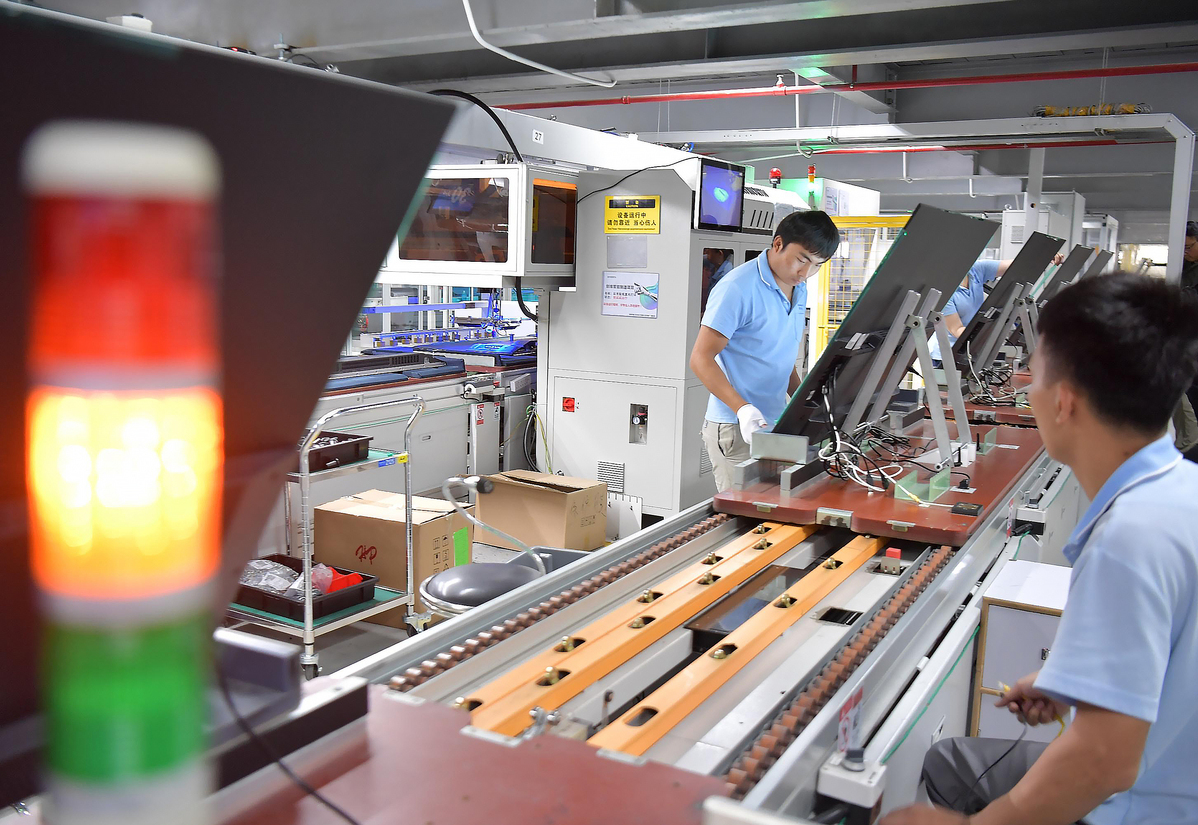Chinese firms shining bright in display tech
By FAN FEIFEI | China Daily | Updated: 2021-09-02 09:43

Smartphones, TVs, tablets, wearable gadgets, vehicle screens to grow
Chinese display panel and home appliance manufacturers are betting big on next-generation cutting-edge semiconductor display technologies, which have huge application potential in smartphones, televisions, tablets, wearable gadgets, vehicle-mounted displays, virtual reality and augmented reality.
Such new display technologies utilize organic light-emitting diodes (OLED) and micro light-emitting diodes (micro LED). Industry insiders said compared with traditional liquid crystal display (LCD), the new display technologies have great improvements in terms of image contrast, brightness and color spectrum, thus further accelerating the upgrade of the display industry.
Domestic display panel suppliers such as BOE Technology Group Co Ltd and Visionox Technology Inc are doubling down on flexible active-matrix organic LED or AMOLED, which is a type of more flexible OLED.
BOE has launched a number of world-leading and innovative flexible display screens, which have been applied in premium flagship smartphone products, such as Honor's Magic 3 series and Vivo's iQOO 8.
Beijing-based market researcher Sigmaintell Consulting said BOE shipped about 25 million flexible OLED smartphone panels in the first half, up nearly 70 percent year-on-year, ranking first in the flexible display sector in the domestic market.
The company has three sixth-generation flexible AMOLED production lines. It started mass production of flexible panels at its facility in Chengdu, Sichuan province, in October 2017. The panels have already been used by more than 10 smartphone manufacturers.
The company's second line in Mianyang, Sichuan province, started mass production in July 2019, while work on its third facility commenced in Chongqing in 2018.
"With the development of 5G, big data and cloud computing, display panels will change lifestyles and enhance visual experiences," said Xu Fengying, vice-president of Visionox, adding that cutting-edge technologies will stimulate applications for flexible screens.
Xu said AMOLED will have wider applications in mobile phones, computers and smart wearables. Its displays have been used by smartphone giants like Xiaomi, Oppo and Huawei.
Visionox's AMOLED display screen production line in Gu'an, Hebei province, launched operations in 2018. It can produce 30,000 glass substrates every month, and meet high-end, foldable screen demand for 90 million smartphones. It started building its second flexible AMOLED production line in Hefei, Anhui province, in December 2018.
"With the arrival of the 5G era, flexible AMOLED products have broad application scenarios due to their foldable and flexible characteristics. They will bring about differing and high-quality experiences for consumers," said Chen Jun, vice-president and chief analyst of Sigmaintell.
According to market research company Omdia, global OLED panel shipments for smartphones will reach 812 million units in 2022, an increase of 38.8 percent compared with the estimated 585 million units in 2021.
In terms of OLED supply, Samsung Display is expected to remain the top market player next year, but its market share is expected to shrink and its dominant position may be challenged as Chinese panel manufacturers have entered the small and medium-sized OLED market and enhanced production skills, Omdia said.
Wang Xiaoya, an analyst from the mobile department of Sigmaintell, said apart from smartphones, the proportion of OLED panels used in smart wearable devices, tablets, computers, laptops, TVs and vehicle-mounted displays has been continuously increasing in recent years.
In addition, Chinese television maker Skyworth Group is banking on large-sized OLED TVs, and has been producing OLED TVs in partnership with South Korea's panel maker LG Display since 2013. At present, LG Display is the only company capable of mass-producing large-sized OLED screens globally.
Last year, direct revenue of the new display industry in China hit 446 billion yuan ($69 billion), accounting for 40.3 percent of the global total and ranking first worldwide, said Wang Zhijun, vice-minister of industry and information technology at the 2021 World Conference on the Display Industry in June.
























